New York State has some of the country's most iconic National Park sites, including the Statue of Liberty, Ellis Island, and Vanderbilt Mansion.
It is also home to several iconic US destinations, including Wall Street, Central Park, and even great wines from the Finger Lakes region.
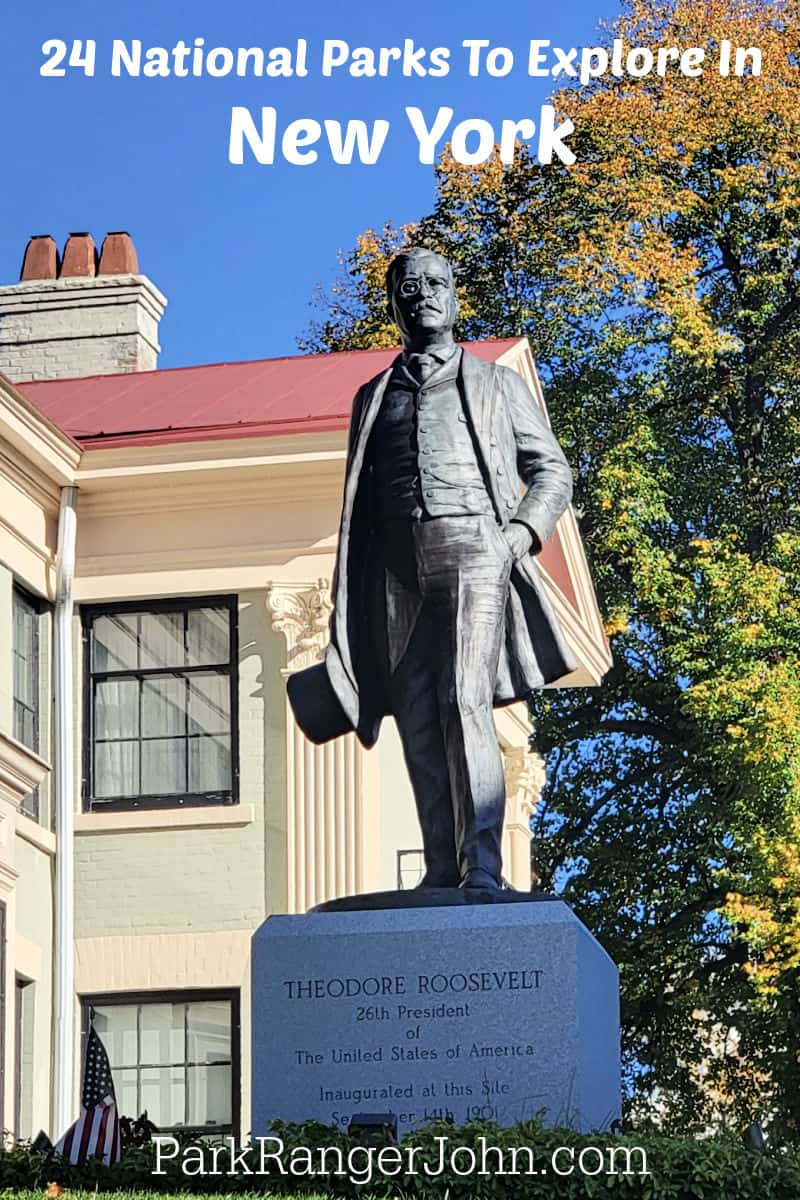
New York is steeped in history, with numerous National Historic Sites and Monuments. Outside the National Parks, New York State Parks has some of the best State Parks in the US, including Niagara Falls State Park and Watkins Glen State Park, with their epic waterfalls!
We have made a few trips to New York to visit the National Park sites, and there are still more to see.
There are so many national parks in New York City that it can be hard to see them all in one visit.
Planning a National Park vacation? America the Beautiful/National Park Pass covers entrance fees for an entire year to all US National Park Sites and over 2,000 Federal Recreation Fee Sites.
The park pass covers everyone in the car for per vehicle sites and for up to 4 adults for per-person sites.
Buy on REI.com and REI will donate 10% of pass proceeds to the National Forest Foundation, National Park Foundation and the U.S. Endowment for Forestry & Communities.
Free Entrance Days -Mark your calendars with the five free entrance days the National Park Service offers annually.
National Parks in New York
African Burial Ground National Monument
Top Things to do - Go for a self-guided walking tour of lower Manhattan's African-American Freedom Trail, Join Ranger Led Tours, Visit the Interactive Visitor Center
Lodging - African Burial Ground National Monument does not offer on-site lodging options. Visitors to the monument can explore a wide range of hotels and accommodations throughout the Financial District, Lower Manhattan, and nearby neighborhoods.
Camping - There are no campgrounds within the National Monument
Park Address - 290 Broadway, New York, NY 10007
African Burial Ground NM is located in Lower Manhattan. The park is open year-round and offers an outdoor memorial and visitor center.
From the 1690s to the 1790s thousands of captive and freed Africans and their descendants were buried at this site. Burials of Africans were not allowed within the city walls of New Amsterdam which later became New York City
The site closed in 1794 and was nearly forgotten until the construction of a federal office building in 1991 uncovered them. A portion of the cemetery was saved after public outcry and preservation efforts changed the building design.
There is now a visitor center within the federal building along with a granite memorial that is an outside memorial.
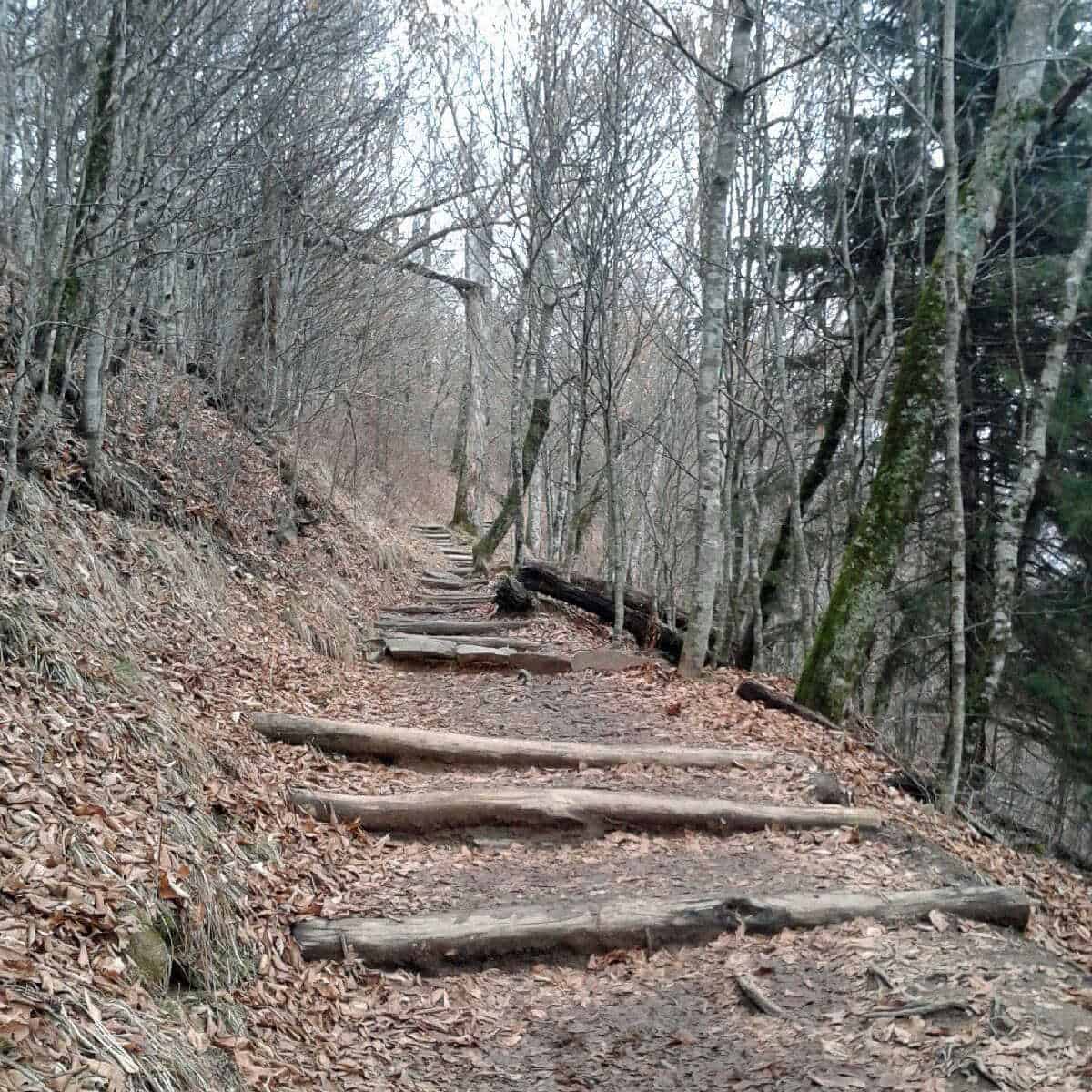
Appalachian National Scenic Trail
Top Things to do - Thru-hiking, Rock Climbing, Camping, Enjoy Scenic Overlooks, Wildlife Viewing, Bird Watching, Photography, Picnicking, Hike the Bear Mountain, Lemon Squeezer, Anthony’s Nose etc.
Lodging - The Appalachian Trail provides a network of trail shelters specifically designed for thru-hikers. These are basic, three-walled structures with a roof and a sleeping platform. They are available on a first-come, first-served basis.
Camping - The trail offers designated campsites and shelters for thru-hikers
90 miles of the Appalachian Trail travels through New York State. Elevation along the trail ranges from 124 feet to 1,433 feet in elevation. Camping is only available in designated sites and may be limited across New York.
You may want to look at the Appalachian Trail Guide - New York for detailed information if you are planning to spend time on the trail. There is also a topographic map of the trail in New York that can help with planning a trip.
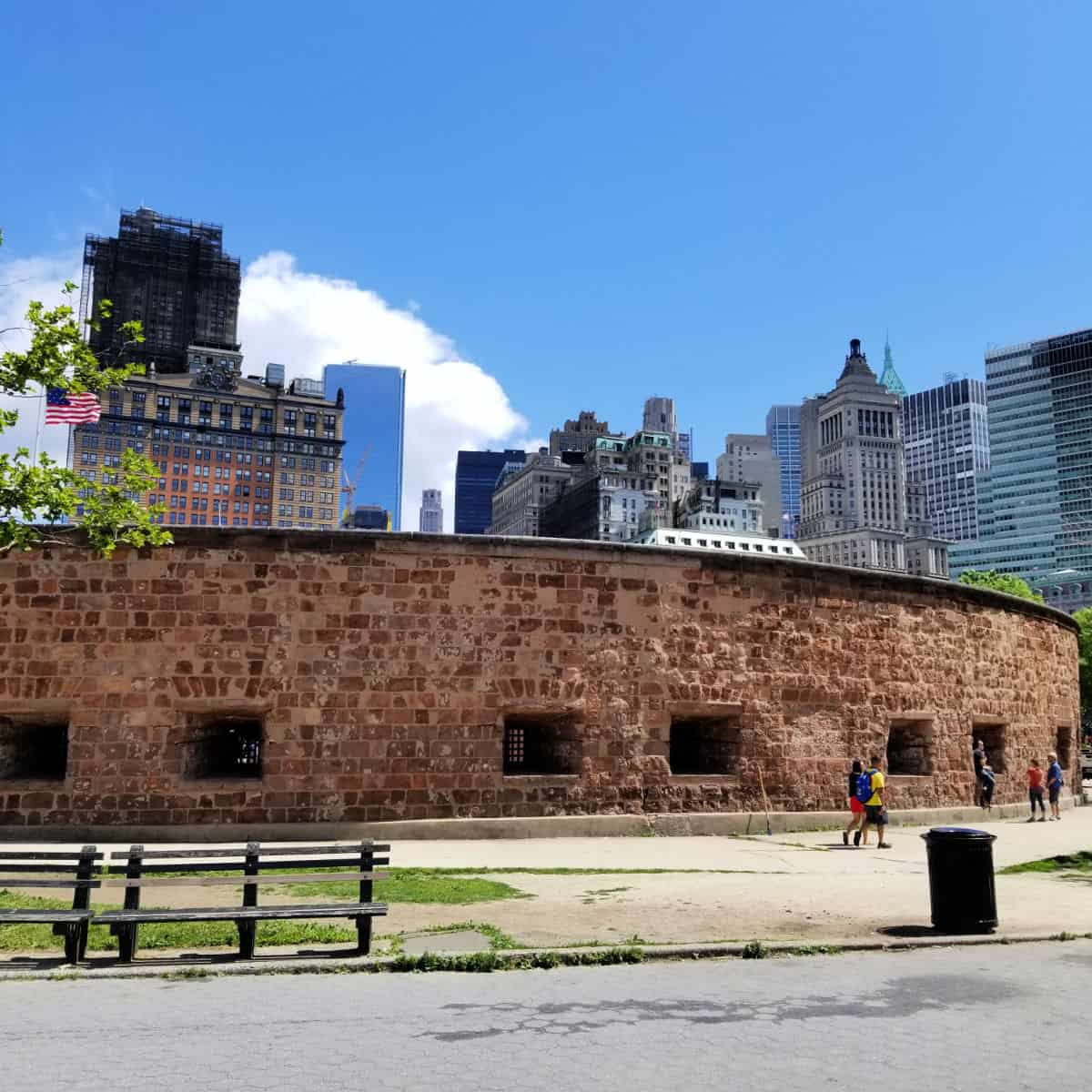
Castle Clinton National Monument
Top Things to do - take a Ranger-guided tour of the Castle, listen to a concert, jump on a ferry to the Statue of Liberty and Ellis Island, just sit on a bench and enjoy your lunch at the foot of Manhattan
Lodging - Castle Clinton National Monument does not provide on-site lodging options. Visitors to the monument have access to a variety of accommodations in the surrounding areas of Battery Park, Lower Manhattan, and the Financial District.
Camping - There are no campgrounds within the National Monument
Park Address - Battery Park, New York , NY 10004
Castle Clinton NM is located in Lower Manhattan. You may actually visit the monument picking up your Statue of Liberty tickets. The monument holds the ticket offices for the Statue cruises but is also a National Park Service site on its own.
Castle Clinton is a 19th-century fort that was constructed to defend New York Harbor against possible British attack. It was renamed in 1817 to honor Mayor DeWitt Clinton. There were no shots fired on any enemies from the fort while it was in military control until 1821.
Over time the structure was used as a restaurant, concert hall, and theater. In 1855 it was converted to become an immigration station and for 34 years more than eight million people entered the United States here.
The structure has been restored to its original conditions as a 19th-century fort. The park offers daily Park Ranger-guided interpretive programs as well as a park museum.
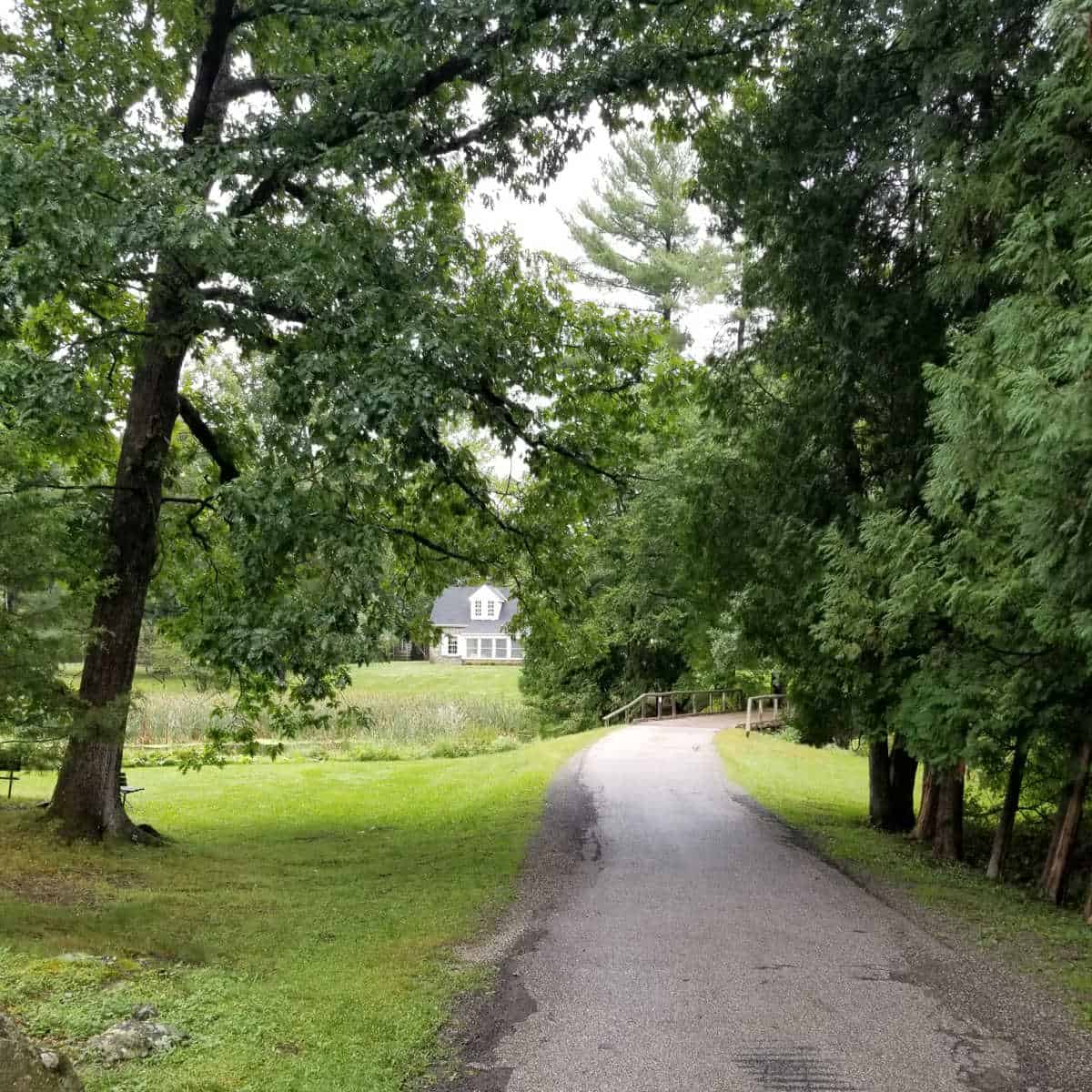
Eleanor Roosevelt National Historic Site
Top Things to do - Visit Stone Cottage Visitor Center, Tour Val-Kill Cottage, Hike Eleanor's Walk and Top Cottage Trail, Explore the FDR Presidential Library Exhibits
Lodging - The Eleanor Roosevelt National Historic Site does not provide on-site lodging options. Visitors exploring this historic site have several nearby lodging choices to consider, including accommodations in Hyde Park, Poughkeepsie, Rhinebeck, and other local towns.
Camping - There are no camping options within the Historic Site
Park Address - 54 Valkill Park Road, Hyde Park, NY 12538
Eleanor Roosevelt NHS also is known as Val Kill is located in Southeastern New York approximately 90 miles from New York City. The park is gorgeous and offers tours of Val-Kill and the surrounding grounds.
Eleanor Roosevelt, the wife of Franklin D. Roosevelt, who was the 32nd President of the United State, loved this property. The couple considered this cottage a favorite retreat and picnic spot.
In the 1920s Elanor and two of her friends started a business employing local Hyde Park residents in making furniture and other items. When the business closed Eleanor decided to turn the building into a cottage that is now known as Val-Kill Cottage.
When FDR passed away Eleanor made this her primary home and lived there until she passed away in 1962. This park was the first National Park Service site dedicated to an American First Lady.
Federal Hall National Memorial
Top Things to do - Guided Tours ,Visit the Visitor Center
Lodging - While it does not offer lodging options within the memorial, there are numerous hotels and accommodations available in the surrounding areas.
Camping - There are no campgrounds within the park.
Park Address - 15 Pine Street, New York, NY 10005
Federal Hall NM is located in Lower Manhattan. The park is open year-round and offers ranger-guided programs and guided walks of the area.
Many historic moments took place at Federal Hall including George Washington's inauguration as the first President of the United States in 1789 and the first meeting of America's Congress and the passage of the Bill of Rights.
Even before the Revolutionary War historic events had occurred at Federal Hall. The building that was here in the 18th century was New Yorks's original city hall. The original Federal Hall was the seat of government when New York was the national capital from 1785-1790.
The current building was completed in 1842 as the U.S. Customs House. It is designed in a Grek Revival style. During your visit, you can see the George Washington Inaugural Gallery with exhibits from the inauguration.
Along with models of the original City Hall and Federal Hall. You can even see the Bible that George Washington used to take the oath of office.
Fire Island National Seashore
Top Things to do - Enjoy sightseeing, hiking, and wildlife-viewing on nature trails at sites on Fire Island or on the grounds of William Floyd Estate. Fire Island Lighthouse, Sailors Haven/Sunken Forest, Watch Hill, Talisman, and Wilderness are National Park Service sites located on the barrier island.
Lodging - There are no traditional lodging within the park
Camping - 20 sand sites are available in-season for tent camping, 6 glamping sites and 1 group site are available at the Watch Hill Family Campground, and are accessible by passenger ferry or private boat.
Backcountry camping is available in the Otis Pike Fire Island High Dune Wilderness on the eastern end of Fire Island and is accessible via Davis Park and Watch Hill.
Park Address - 120 Laurel Street, Patchogue, NY 11772
Fire Island NS is located in Southeastern New York off Long Island. The park is open year-round but Spring through Fall offers the best opportunities to spend time hiking, camping, swimming and exploring.
Fire Island is a 32-mile long barrier island that has long been a scenic escape from the crowds of New York City. The National Seashore was established in 1964 and stretches along 26-miles of the island.
You may be surprised to see 17 communities within the National Seashore. When it was established parameters were set that the communities and pre-existing commercial uses would be allowed to remain as long as development was done within ordinances established within the park.
You will want to plan ahead for your visit so you can time your visit with the ferry schedule and the visitor center hours. Fire Island Lighthouse is located within Robert Moses State Park.
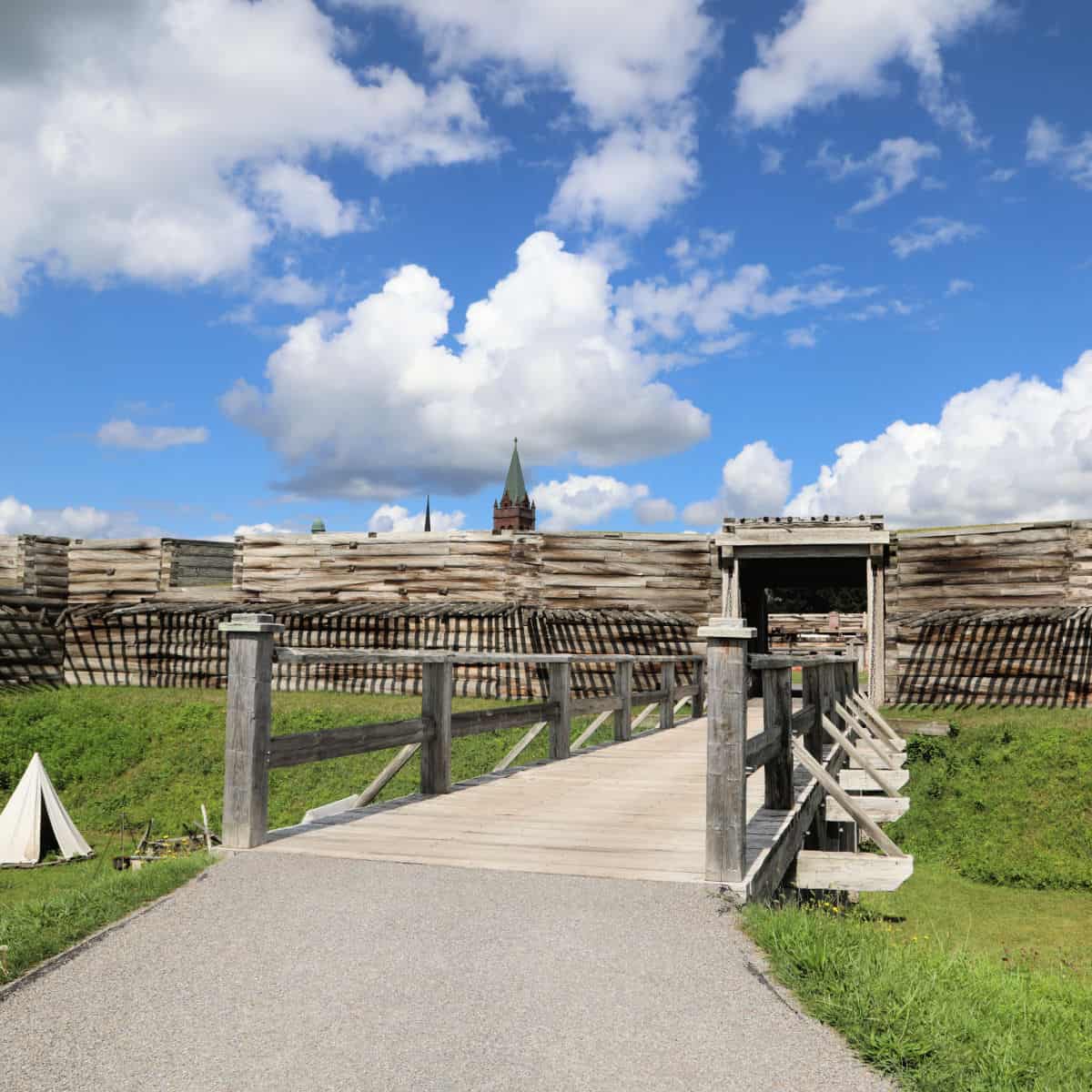
Fort Stanwix National Monument
Top Things to do - Become a Junior Ranger, Watch the park movies, Learn about the American Revolution, Build a fort, Reserve a group tour, Watch a historic weapons demonstration, Explore some really cool architecture, Climb through the wicket gate...a "secret door" in an old fort!, Attend a special event, Take a self-guided tour through the rooms, Play with historic toys and games, Join the Continental Army for a day
Lodging - There are no lodging options within Fort Stanwix National Monument
Camping - There is no camping within the park
Park Address - 100 North James St. Rome, NY 13440
Fort Stanwix is located in Central New York approximately 40 miles from Syracuse. The park has a recreated fort you can explore along with a great visitor center.
Six nations of American Indians (Cayuga, Mohawk, Oneida, Onondaga, Seneca, and Tuscarora) used a portage path to travel between the Mohawk River and Wood Creek. This was a 1 to 6 mile long trip depending on the season and water level.
This portage trail took on major importance during the fur trading years when it became part of the route between New York and the Great Lakes. The British built Fort Stanwix in 1758 on this route. It became active during the French and Indian War from 1754-1763.
The fort was rebuilt by Patriot forces during the American Revolution and renamed it, Fort Schuyler. British forces laid siege to the fort during the war for 21 days in 1777 but then withdrew to Canada after meeting fierce resistance and the arrival of more American reinforcements.
The defense of the fort kept the British from moving down the Mohawk Valley and led to the American victory at Saratoga.
This was a turning point in the Revolutionary War. Today there is a reconstructed fort located in downtown Rome, New York near the Erie Canal. You can experience living history demonstrations and interpretation during your visit along with watch the park film.
Gateway National Recreation Area
Top Things to do - Archery, Bicycling, Hiking. Bird Watching, Fishing, Boating, Swimming, Winter Sports, Guided Tours , Picnicking
Lodging - Since Gateway is located in NYC and metropolitan NJ, there are many options of lodging outside of the park to choose from.
Camping - The Sandy Hook campsites are seasonally available for camping,
Park Address - The Gateway National Recreation Area 210 New York Avenue, Staten Island, New York, 10305
Gateway NRA is located along New York Harbor as well as in New Jersey. From most of the park, you can see the skyline of Manhattan in the distance.
The Staten Island area includes Great Kills Park a 580-acre park with hiking trails and marinas. You can tour the 19th-century Fort Wadsworth besides the Verrazano-Narrows Bridge at the entrance to New York's Inner Harbor.
Jamaica Bay Wildlife Refuge is located in Queens and is the only wildlife refuge within the National Park system. This is a great place for bird watching.
You can learn about the history of aviation at Floyd Bennet Field in Brooklyn. This was the site of New York's first municipal airport in 1931.
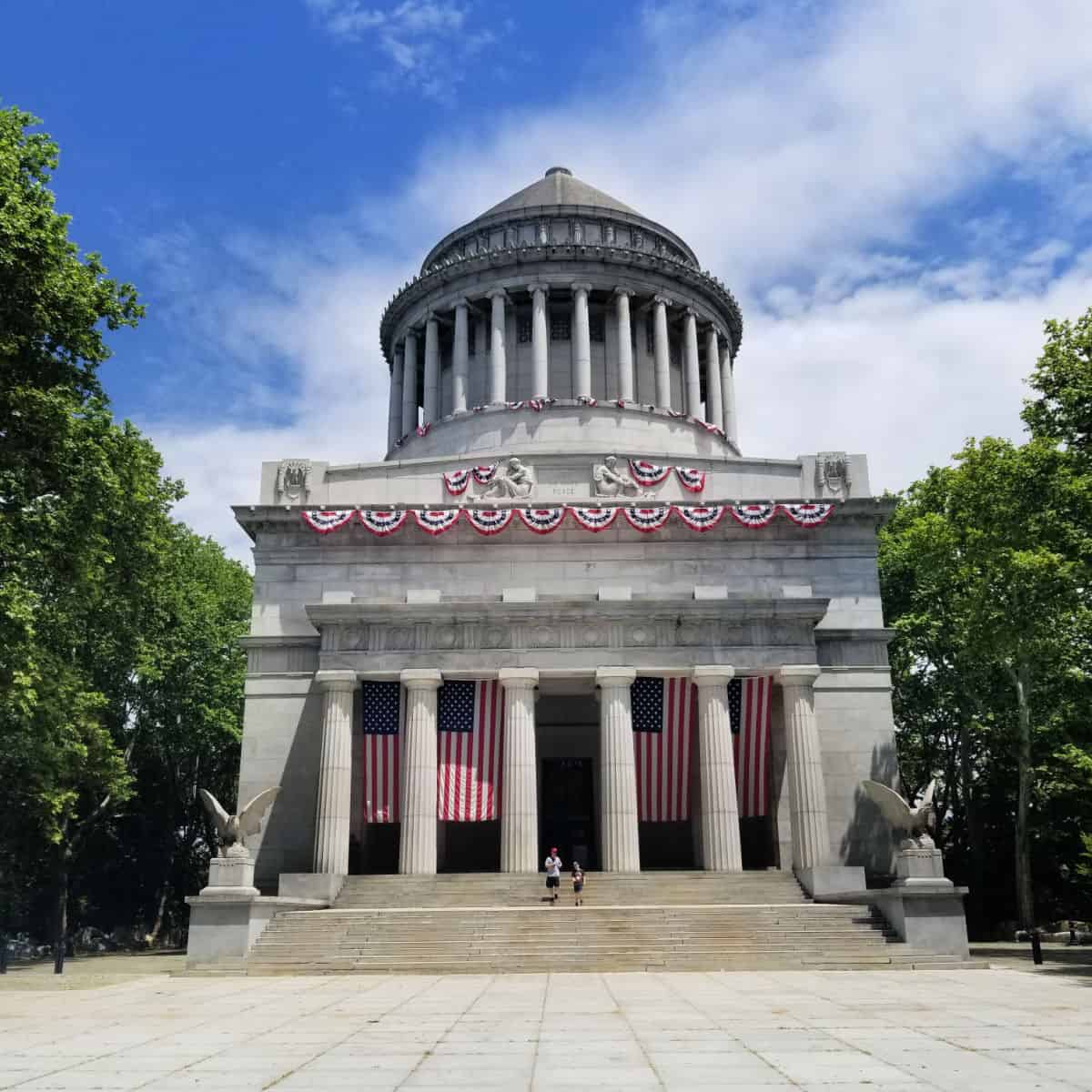
General Grant National Memorial
Top Things to do - Visit the Visitor Center, Tour the Mausoleum, Explore the Memorial Grounds, Learn about Grant’s Life, Explore Riverside Park
Lodging - While the memorial does not offer on-site lodging, there are various lodging options available in different neighborhoods of New York City.
Camping - There are no campgrounds within the park.
Park Address - Riverside Drive and W. 122nd Street, New York, NY 10027
The General Grant Memorial is located in Upper Manhattan in New York City. Ulysses S. Grant was elected President of the United States for two terms along with being the first four-star general of the U.S. Army.
When President Grant passed away in 1885 around 90,000 people from around the world donated more than $600,000 to build a tomb and resting place for him. The tomb was dedicated on April 27, 1897. Both Ulysses S. Grant and his wife Julia Dent Grant are buried at the memorial.
Grant's Tomb overlooks the Hudson River in the Morningside Heights area of Manhattan. The monument is more than 150 feet tall and is the largest mausoleum in North America. As a visitor you can check out the visitor center which is near the memorial, you can also enter the memorial and view the tomb and art depicting Grants life.
Governors Island National Monument
Top Things to do - Guided Tours, Visit Castle Williams, Explore Fort Jay
Lodging - There are no lodging options within Governor’s Island
Camping - No campgrounds area available within the National Monument
Park Address - Governors Island, New York, NY 10004
Governors Island NM is located in New York Harbor between Manhattan and Brooklyn.
The island has always played an important role in New York City life. It has been valued as a strategic military location along with a place for picnics and relaxing. Forts were built here to keep British forces from entering New York Harbor in the war of 1812.
The U.S. Coast Guard had a base here for 30 years before the area was turned over to the National Park Service. The National Monument is 22-acres and offers tours of the historic forts and former military buildings. You can also enjoy epic views of the Manhattan skyline.
Access to the island is via a ferry that departs from the Battery Maritime Building in Lower Manhattan. You can also catch a ferry in Brooklyn from Brooklyn Bridge Park Pier 6.
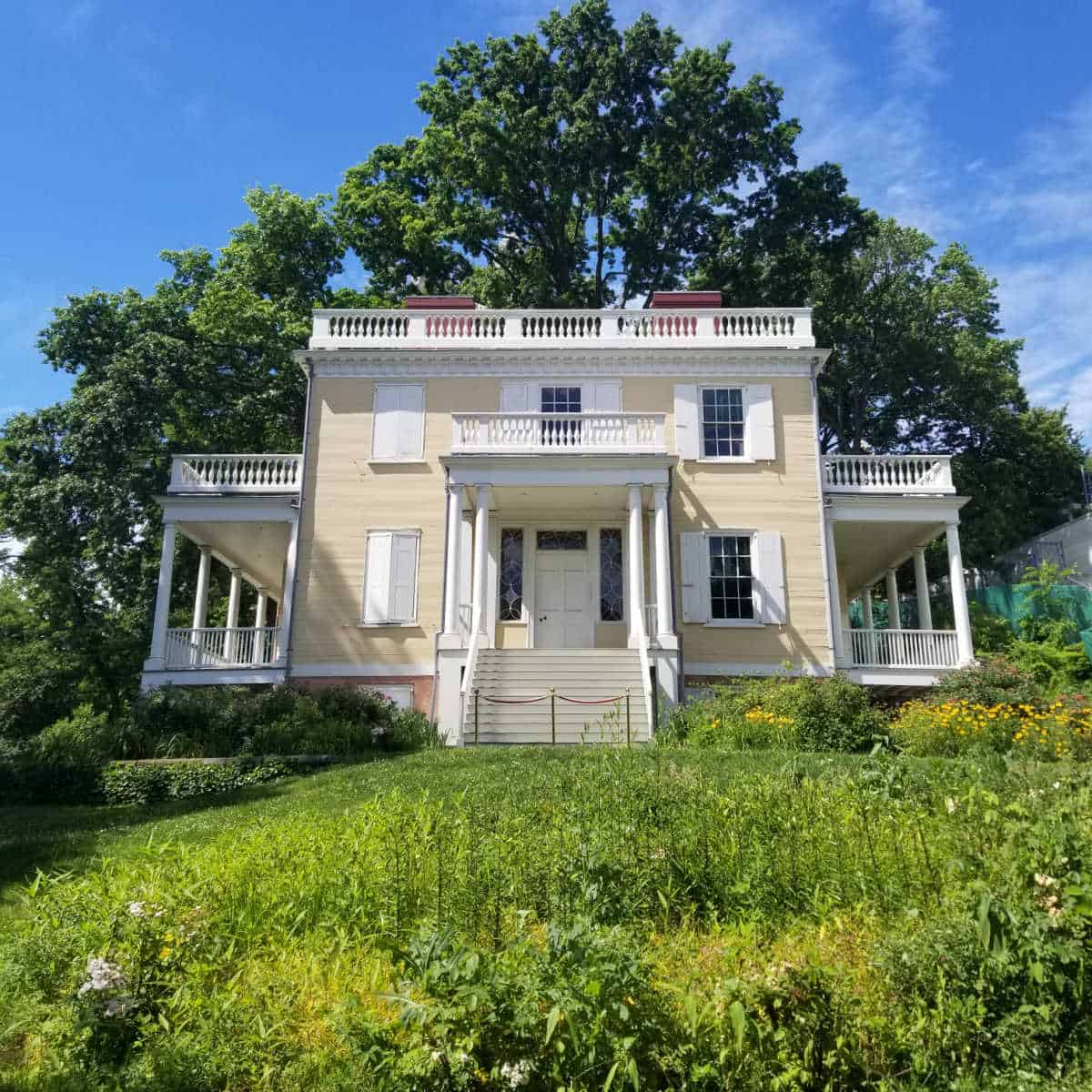
Hamilton Grange National Memorial
Top Things to do - Take a guided tour of the Hamilton Grange house, Join ranger-led programs, Junior Ranger Program, Stroll through the historic gardens and grounds
Lodging - While the memorial itself does not provide on-site lodging options, visitors have a wide range of accommodations available throughout the city.
Camping - There are no camping options within the National Memorial
Park Address - 414 West 141st Street, New York, NY 10031
Hamilton Grange NM is located in the Hamilton Heights neighborhood of New York City. The site offers tours of Alexander Hamilton's 1802 home.
We have all heard of Hamilton from the little Broadway musical that has taken the world by storm. If you loved the musical you can now learn more about Alexander Hamilton and his importance in US history.
Alexander Hamilton was one of the most influential founding fathers of the United States. He was a trusted aide to George Washington during the Revolutionary War. He served in the Continental Congress, was a delegate to the Constitutional Convention, Co-author of The Federalist Papers, and the first secretary of the Treasury.
He truly helped shape what the United States would become. When he retired from public service, Hamilton commissioned prominent New York architect John McComb Jr to design a house on his then 32-acre estate. The house was completed in 1802 and named after Hamilton's family home in Scotland.
Alexander Hamilton only lived at the Grange for two years before he was fatally wounded in a duel with his political rival Aaron Burr on July 11, 1804.
The Grange was moved in 1889 and for a long time sat between an apartment building and a church. The Grange was moved in 2008 to St. Nichols Park.
It has since been restored to its original appearance and it still sits on part of Alexander Hamilton's original 32-acres.
Sign up for a The Story of Hamilton Walking Tour while visiting New York!
Harriet Tubman National Historical Park
Top Things to do - Visit the Harriet Tubman Home, Explore the Historic Thompson AME Zion Church, Visit Fort Hill Cemetery
Lodging - There ae no lodging options within the park
Camping - There are no campgrounds within Harriet Tubman National Historical Park
Park Address - 47 Parker Street, Auburn, NY 13021
Harriet Tubman NHP is located in Auburn, New York. The park includes Thompson Memorial African Methodist Episcopal Zion Church that Tubman raised funds to build and where you can walk the grounds, Harriet Tubman Visitor Center, the Tubman Home for the Aged, and the Harriet Tubman Residence.
Some of the sites are currently managed operated by National Park Service partner, Harriet Tubman Home, Inc. There may be admission fees for some of the tours.
The park is still a park in progress. This means some sites are not fully developed and will open over time. On January 10, 2017, the Harriet Tubman National Historical Park was established.
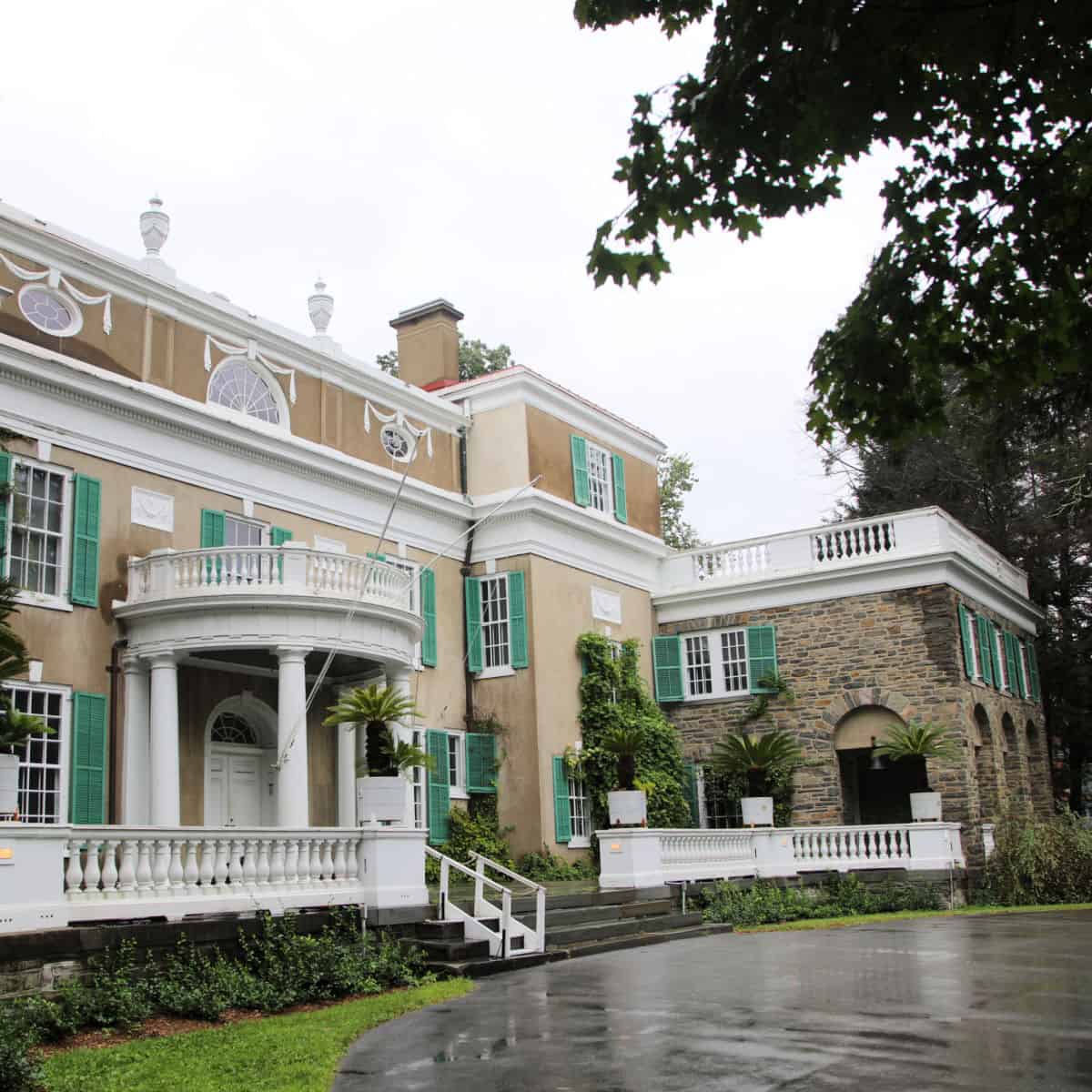
Home of Franklin D. Roosevelt National Historic Site
Top Things to do - Visit at the Henry A. Wallace Visitor Center, Tour FDR's Home, Explore the FDR Presidential Library Exhibits, Visit the Burial Site, Visit the Home Garden, Visit the Walled Garden at Bellefield, Hike the Farm Lane Trail
Lodging - There are no National Park lodging within the site. However, you can find lodging in Hyde Park and Poughkeepsie.
Camping - There are no camping opportunities within the Historic Site
Park Address - 114 Estates Lane, Hyde Park, NY 12538
Home of Franklin D. Roosevelt NHS is located in Southeastern New York approximately 90 miles from New York City. The park includes Springwood the family estate in Hyde Park
FDR was born in 1882 at Springwood. He grew up riding horses, fishing, sailing and exploring the outdoors.
In 1905 Franklin married Eleanor Roosevelt who was distantly related to him. Eleanor was the niece of President Theodore Roosevelt. After their marriage, they joined FDR's mother Sara at Springwood.
FDR considered this Hyde Park estate his home and lived there at least part-time even when his official residence was the White House. President Roosevelt is buried on the property along with Eleanor and their beloved dog Fala, a Scottish Terrier.
Visits to the park start at the Henry A Wallace visitor center where you will meet a guide who takes you up to the house. Tickets to the tour also include admission to the Franklin D. Roosevelt Presidential Library and Museum.
Martin Van Buren National Historic Site
Top Things to do - Watch an introductory film about Martin Van Buren's life at the Visitor Center, Tour Van Buren’s House, Picnicking, Birdwatching, Visit the statue of President Van Buren in the Village of Kinderhook
Lodging - Martin Van Buren NHS has no lodging on site but there are plenty of places to stay in Columbia County
Camping - There are no campgrounds within the site
Park Address - 1013 Old Post Road, Kinderhook, NY 12106-3605
Martin Van Buren NHS is located in Eastern New York approximately 25 miles from Albany. The park offers tours of Martin Van Buren's home and farm.
Martin Van Buren served as a U.S. Senator, governor of New York, secretary of state and Vice President before being elected in 1836 as the eighth President of the United States. Van Buren bought an estate he called "sweet Lindenwalk" in 1839. After losing the election in 1840 he returned to Lindewalk and established a 220-acre farm.
Visitors need to stop by the visitor center to buy tickets for the guided tour of the 36-room Gothic Revival mansion. There is also a ¾ mile interpretive trail about Van Buren and his farm.
Sagamore Hill National Historic Site
Top Things to do - Explore the Historic Village of Oyster Bay, Visit the Roosevelt Gravesite at Youngs Memorial Cemetery, Bring Your BARK Ranger for a Walk, Explore Park Grounds, Watch the sunset from the piazza, Explore outdoor exhibits in the Farm Shed and Chicken Coop, Self-Guided Tour of Sagamore Hill, Go Birdwatching, Attend an Outdoor Program, Visit Eel Creek and Cold Spring Harbor, Hike Sagamore Hill's Nature Trail
Lodging - There are lodging options in Oyster Bay and nearby towns for those looking to stay in the area.
Camping - No campgrounds are available within Sagamore Hill National Historic Site
Park Address - 20 Sagamore Hill Road, Oyster Bay 11771
Sagamore Hill NHS is located in Southeaster New York on Long Island approximately 35 miles east of New York City. The park provides tours of Theodore Roosevelt's Long Island Home.
When Theodore Roosevelt was 15 his father established a summer home on Long Island. When Theodore was 25 he purchased 155-acres near his father's home. He built a house here in 1884 the same year his wife Alice passed away.
In 1887 Roosevelt move into the house with his 2nd wife Edith. He named the house Sagamore Hill from an Algonquin word for a chief. Roosevelt would call this house his home until he passed away in 1919. Edith continued to live at Sagamore Hill until she passed away in 1948.
While President Theodore Roosevelt used Sagamore Hill as his summer White House. Today you can enjoy a guided tour of the 23-room shingle-style house which still includes original furnishings and personal items.
Saint Paul’s Church National Historic Site
Top Things to do - Tour the Museums, Burial Yard, and Historic Sites
Lodging - There are no lodging options within Saint Paul’s Church National Historic Site
Camping - No campgrounds are available within the site
Park Address - 897 South Columbus Avenue, Mount Vernon, NY 10550
Saint Paul's Church NHS is located just north of New York City. The park protects a church that has important ties to the American Revolution.
The Mount Vernon parish was established in 1665 on this spot just north of present-day NYC. During the great election of 1773, a local popular candidate defeated the British Governors favored the candidate. Journalist John Peter Zenger published an account of the election which led to a libel trial that helped establish important Freedom of the Press guidelines.
The present church was built in 1764 and was used as a hospital during the Revolutionary War Battle of Pell's Point. The bell in the tower was cast in 1758 at the same foundry that cast Philadelphia's famous Liberty Bell.
The 5-acre cemetery next to the church has gravestones that date back to 1704. The National Park Service took over the church in 1980. Today you can enjoy ranger-guided tours of the church and demonstrations of the 1833 pipe organ which is one of the oldest functioning pipe organs in the United States.
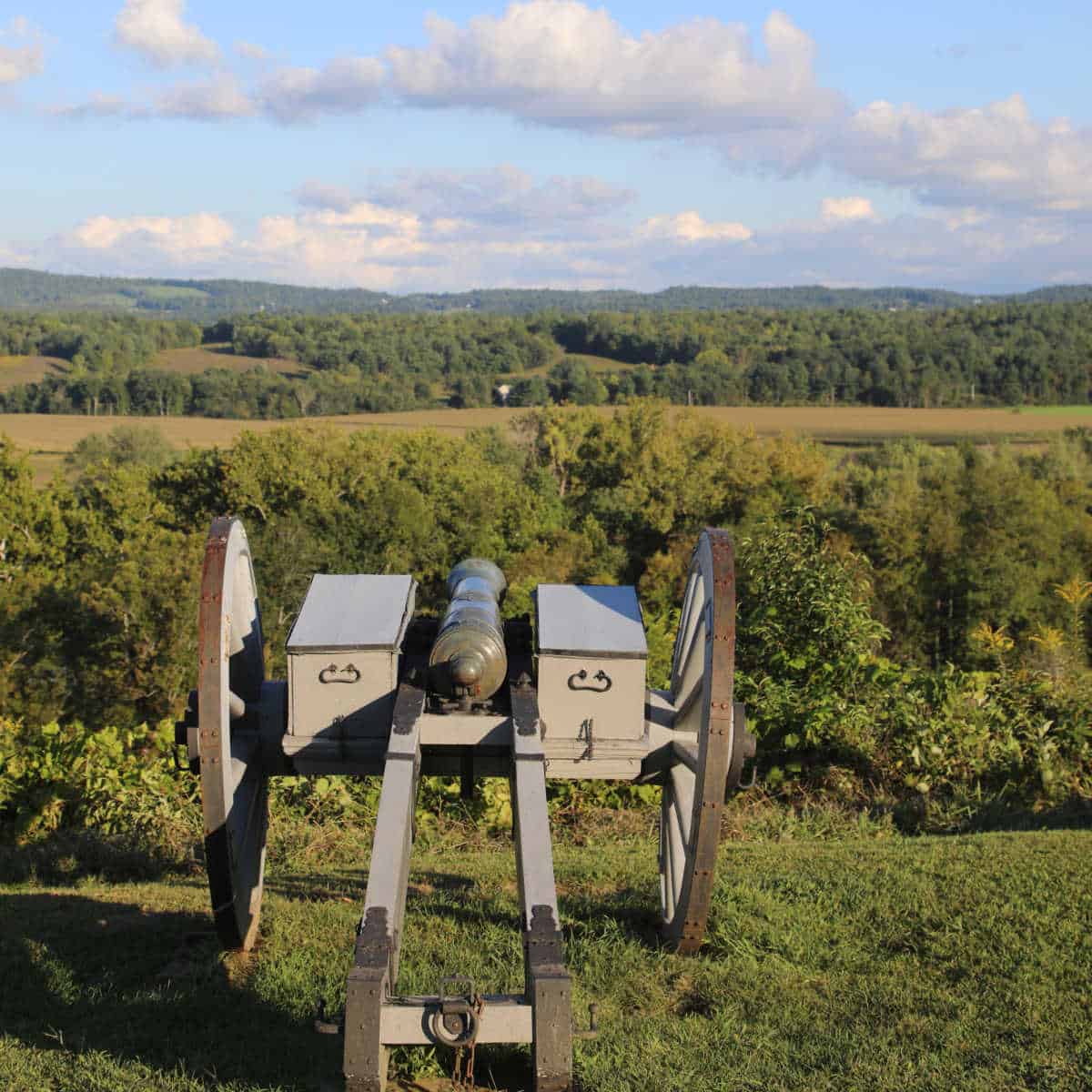
Saratoga National Historical Park
Top Things to do - Tour the Battlefield, Experience the stories of Saratoga National Historical Park through audio tours, Visit the Visitor Center, Bike the Tour Road, hike along The Wilkinson Trail, drive along the Tour Road, Climb the Saratoga Monument, Experience Victory Woods, Tour the Philip Schuyler Country Estate, Cross-Country Skiing
Lodging - There is no lodging available within the park
Camping - No camping within Saratoga National Historical Park
Park Address - 648 Route 32, Stillwater, NY 12170
Saratoga NHP is located in Eastern New York approximately 27 miles north of Albany. The park is open year-round and offers a scenic driving route of a historic battlefield and the restored Schuyler House.
The Battles of Saratoga in 1777 have been called "the turning point of the American Revolution". They truly changed the course of world history. British troops planned to march south through New York's Hudson River Valley and link up with troops in British-occupied New York City. The plan was to isolate New England from the rest of the states and bring an end to America's fight for independence.
The Americans triumphed which convinced France to become an American ally and go to war with England. This move caused the British to divide their military effort through the world which became a major factor leading to the independence of the United States.
Today you can visit the battlefield site, visitor center, drive the 9-mile auto tour, and on specific weekends see re-enactments.
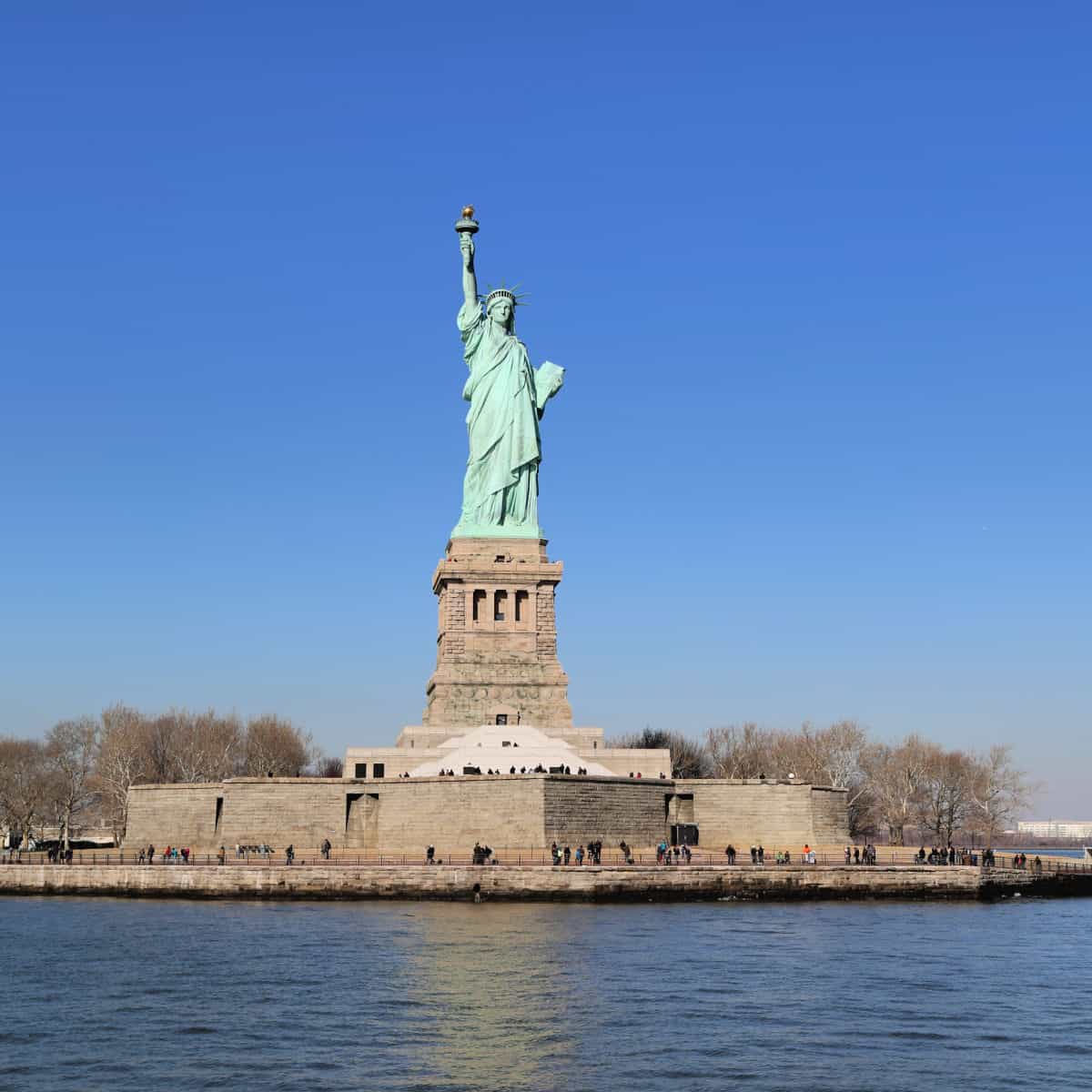
Statue of Liberty National Monument
Top Things to do - Visit the Museum, Join a Park Ranger's Guided Tours and self-guided Audio Tours, Visit the Pedestal, Visit the Crown, Ellis Island National Museum of Immigration, Be A Junior Ranger
Lodging - There are numerous lodging options in Lower Manhattan, Battery Park City, Jersey City, Brooklyn, and New Jersey available for visitors to the Statue of Liberty National Monument.
Camping - Camping is not available on Liberty Island or Ellis Island. However, there are campgrounds and campsites in the surrounding areas, such as in New Jersey or nearby state parks, if you prefer camping while visiting the Statue of Liberty National Monument.
Park Address - Liberty Island, New York, NY 10004
A trip to the United States wouldn't be complete without a visit to this icon of freedom and democracy. A token of friendship from France in 1886, the Statue of Liberty sits on a 12-acre island in the harbor. Security is tight these days, but with advance planning, you can visit certain areas of the monument.
The proper name of the statue is "Liberty Enlightening the World". It was a gift from the people of France to the United States. The statue was dedicated on October 28, 1886. It was installed inside the walls of Fort Wood which was a U.S. military post built around the time of the War of 1812.
The crown represents the seven seas and continents of the world. The tablet is inscribed in Roman numerals with the date of American Independence, July 4, 1776.
The Ellis Island immigration museum, part of the Statue of Liberty National Monument, is a fascinating piece of U.S. history, especially for those descended from one of the 12 million immigrants who began their new lives here.
The Statue of Liberty is definitely the most popular National Park in New York City! Make sure to plan time to visit the monument and explore.
Grab a priority or flexible ticket to the Statue of Liberty or sign up for a 4 hour guided tour of the Statue of Liberty
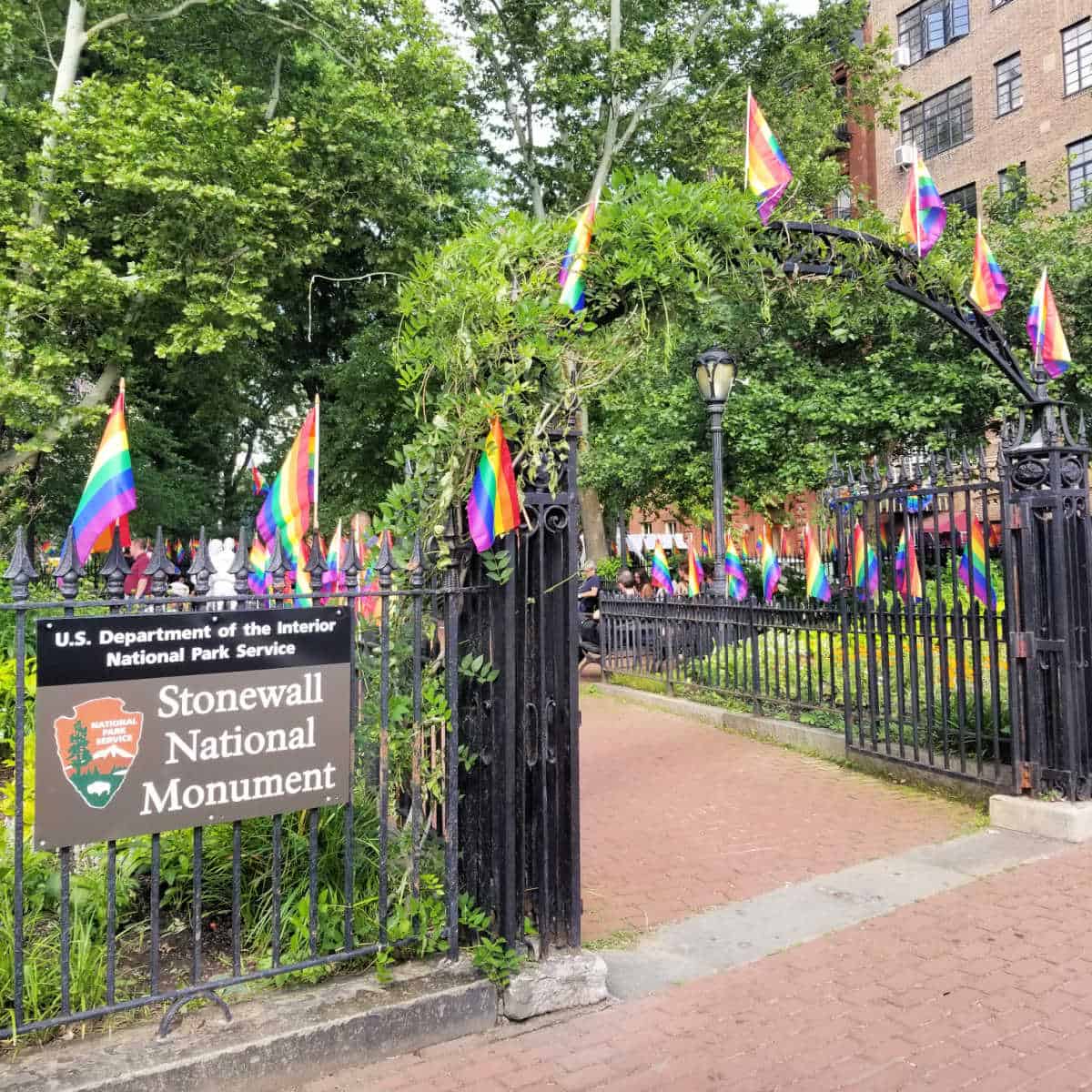
Stonewall National Monument
Top Things to do - Visit the historic Stonewall Inn, Join a Junior Ranger Program, LGBT History Tour, Learn about Christopher Park Alliance, Virtual Fence Exhibit
Lodging - There are no lodging options within the Monment. Numerous lodging options are available in and around Greenwich Village in Manhattan.
Camping - No campgrounds are available within Stonewall National Monument
Park Address - Intersection of Christopher, Grove, and Fourth Streets. New York, NY 10014
Stonewall NM is located in the West Village neighborhood of Greenwich Village in Lower Manhattan. The park interprets and shares the story of what happened during the June 28, 1968, Stonewall Uprising.
A police raid of the Stonewall Inn on June 28, 1968, provoked a spontaneous uprising fighting for LGBTQ rights. The uprising and demonstrations continued for multiple days in Christopher Park across from the Stonewall Inn.
This is still a park in progress so there is currently no visitor center or designated contact station. Park Rangers can be found in Christopher Park on certain days.
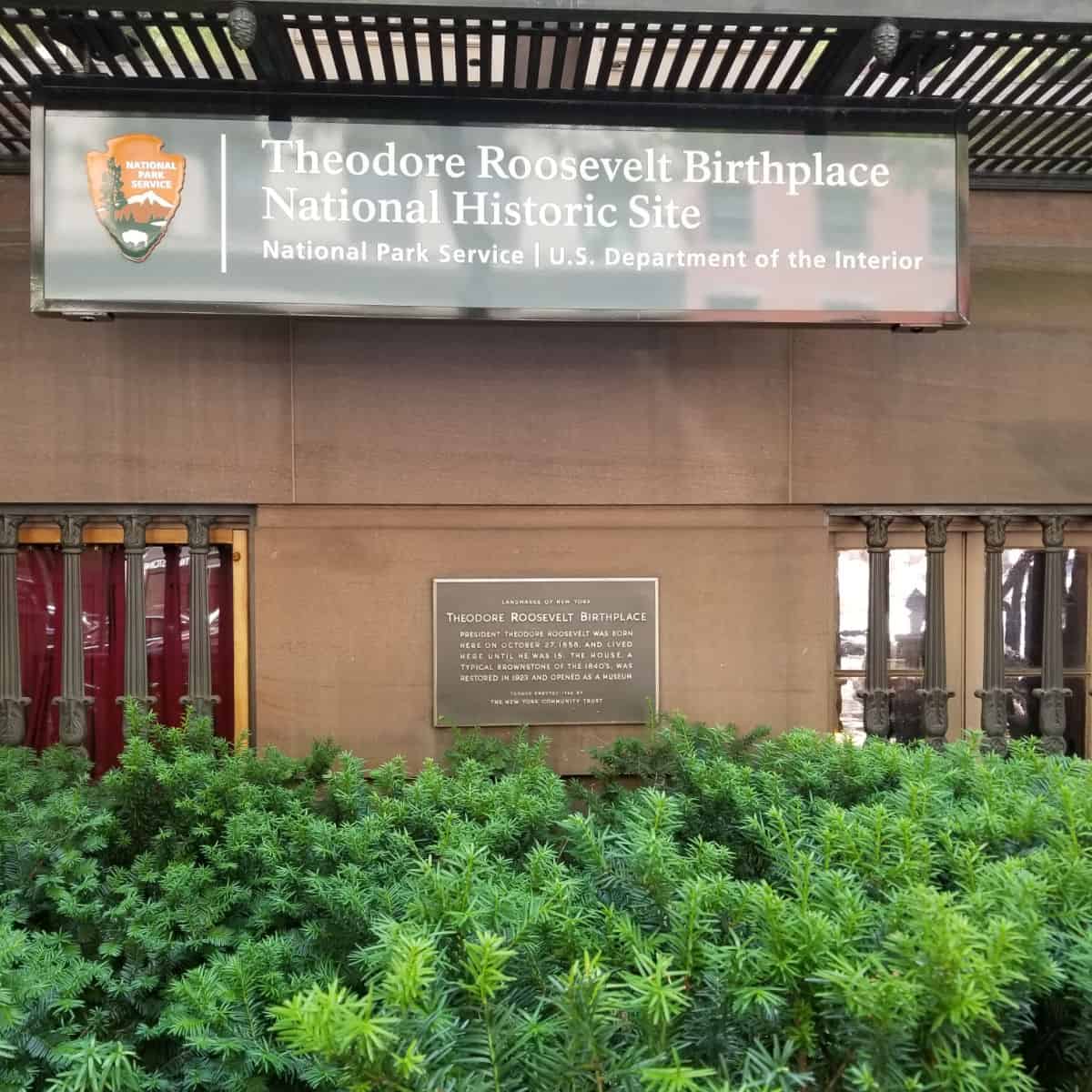
Theodore Roosevelt Birthplace National Historic Site
Top Things to do - Take a guided tour of Theodore Roosevelt's childhood home, Join Ranger-Led programs, Explore the visitor center's interactive exhibits, Watch the Introductory Film
Lodging - The Theodore Roosevelt Birthplace National Historic Site does not have on-site lodging. However, there are numerous lodging options available throughout Manhattan, including in the surrounding area of Theodore Roosevelt's birthplace, which is in the Flatiron District.
Camping - There are no camping opportunities within the site
Park Address - 28 East 20th Street, New York, NY 10003
Theodore Roosevelt Birthplace NHS is located in Manhattan. The park offers tours of the reconstructed childhood home of Theodore Roosevelt.
Theodore Roosevelt was born in 1858 to a wealthy NY family. He lived his first 14 years in a brownstone on East 20th Street in Manhattan. Located in the fashionable Gramercy neighborhood. His school was also in the neighborhood but he was to sickly as a boy to attend regular classes.
To help Theodore then known a Teedie to improve his heath his father built an outdoor gymnasium which played a key part in Roosevelt's dedication to being an outdoorsman. The original home was demolished in 1916. A group of prominent friends and supporters bought the property and reconstructed his early home as a memorial.
You can take a ranger-guided tour through rooms furnished as they would have been in the gilded age of the 1860s immediately following the Civil War. Many of the furnishings and belonged to Theodore Roosevelt or other members of the Roosevelts.
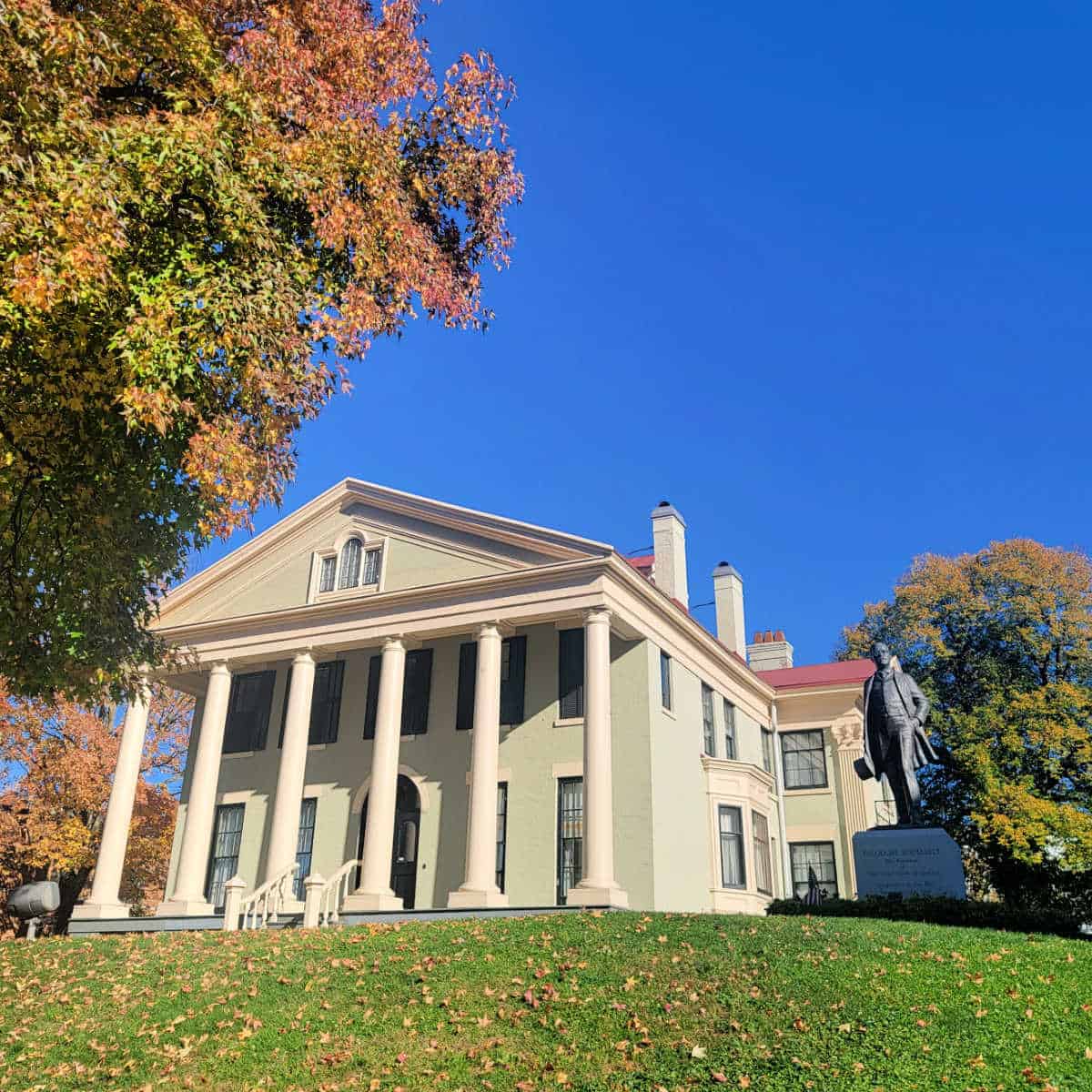
Theodore Roosevelt Inaugural National Historic Site
Top Things to do - Guided Museum Tour, Special Behind-the-Scenes Tours, View an Introductory Film
Lodging - There are no lodging options within the park
Camping - No campgrounds are available within Theodore Roosevelt Inaugural National Historic Site
Park Address - 641 Delaware Avenue, Buffalo, NY 14202
Theodore Roosevelt Inaugural NHS is located in Buffalo, New York. Vice President Theodore Roosevelt was sworn into office after President William McKinley was assassinated.
Theodore Roosevelt went to the house where McKinley's body was laid in rest and was urged to take the oath of office there. Theodore Roosevelt felt like the site was inappropriate so he instead went t the home of his friend Ansley Wilcox. A Buffalo NY federal judge administered the oath of office.
The Wilcox home was originally built as an officer's headquarters for a short-lived US Army post called Poinsett Barracks or Buffalo Barracks. In 1901 the house became the private residence of Ansley Wilcox. In the 1930s the house was turned into a restaurant. After a successful effort to save the building in 1966, the Department of Interior declared the Wilcox House a National Historic Site.
Today you can enjoy a guided tour if the Wilco home. The rooms have been restored based on photographs taken soon after Theodore Roosevelt was sworn into office.
Thomas Cole National Historic Site
Top Things to do - Thomas Cole National Historic Site, Explore Cole's art studio, Hike to one of the places in nature where Thomas Cole painted, Attend periodic special events related to Thomas Cole and American art history
Lodging - While there are no lodging options within the Thomas Cole National Historic Site, you can find various accommodations in Catskill, Hudson, Tannersville, and Hunter, New York.
Camping - Thee are no campgrounds within the site
Park Address - 218 Spring Street, Catskill 12414
Thomas Cole NHS is located in Southeastern New York approximately 30 miles south of Albany. The park offers tours of Thomas Cole's home and studio along with hiking trails in the Catskills.
Thomas Cole was born in England in 1801. He moved to the United States in 1818 and within 10 years his paintings made him a notable figure in the American art scene. He first started painting in the Catskills Mountains in 1825. After studying in Europe he established a studio on a farm called Cedar Grove.
In 1836 he married the niece of Cedar Grove's owner and moved into the house on the property. He built a studio nearby which has been demolished and then rebuilt.
Thomas Cole is regarded as the founder of the Hudson River School which was an artistic movement that showcased the majesty of the American landscape.
Today you can tour the restored 1815 Federal-style Main House, the 1839 Old Studio and the rebuilt New Studio. The park also has a film about Thomas Cole that is available in the visitor center.
Upper Delaware Scenic and Recreational River
Top Things to do - Enjoy picturesque drives along the river's edge, Enjoy picturesque drives along the river's edge, Paddle along the pristine waters of the Upper Delaware River,Fishing, Wildlife Viewing, Birdwatching, Hiking
Lodging - The Upper Delaware Scenic and Recreational River does not have on-site lodging facilities within the park boundaries. However, the surrounding region offers various lodging options, including campgrounds, cabins, hotels, and vacation rentals, to accommodate visitors.
Camping - Several campgrounds are available along the river, providing opportunities for camping, picnicking, and enjoying the natural surroundings.
Park Address - 274 River Road, Beach Lake, PA 18405
The Upper Delaware Scenic and Recreational River is located in southeastern New York and northeastern Pennsylvania approximately 70 miles northwest of New York City. The park offers canoeing, rafting, and fishing.
The river forms the boundary between New York and Pennsylvania. Upper Delaware is the longest free-flowing stream in the Northeast. 73-miles of the river has been designated as the Upper Delaware Scenic and Recreational River but within this, the National Park Service only owns a small amount of land.
The Upper Delaware is managed through a partnership between federal, state and local agencies and private businesses. You can enjoy Class I and II rapids along with many flat areas perfect for spending a day on the water.
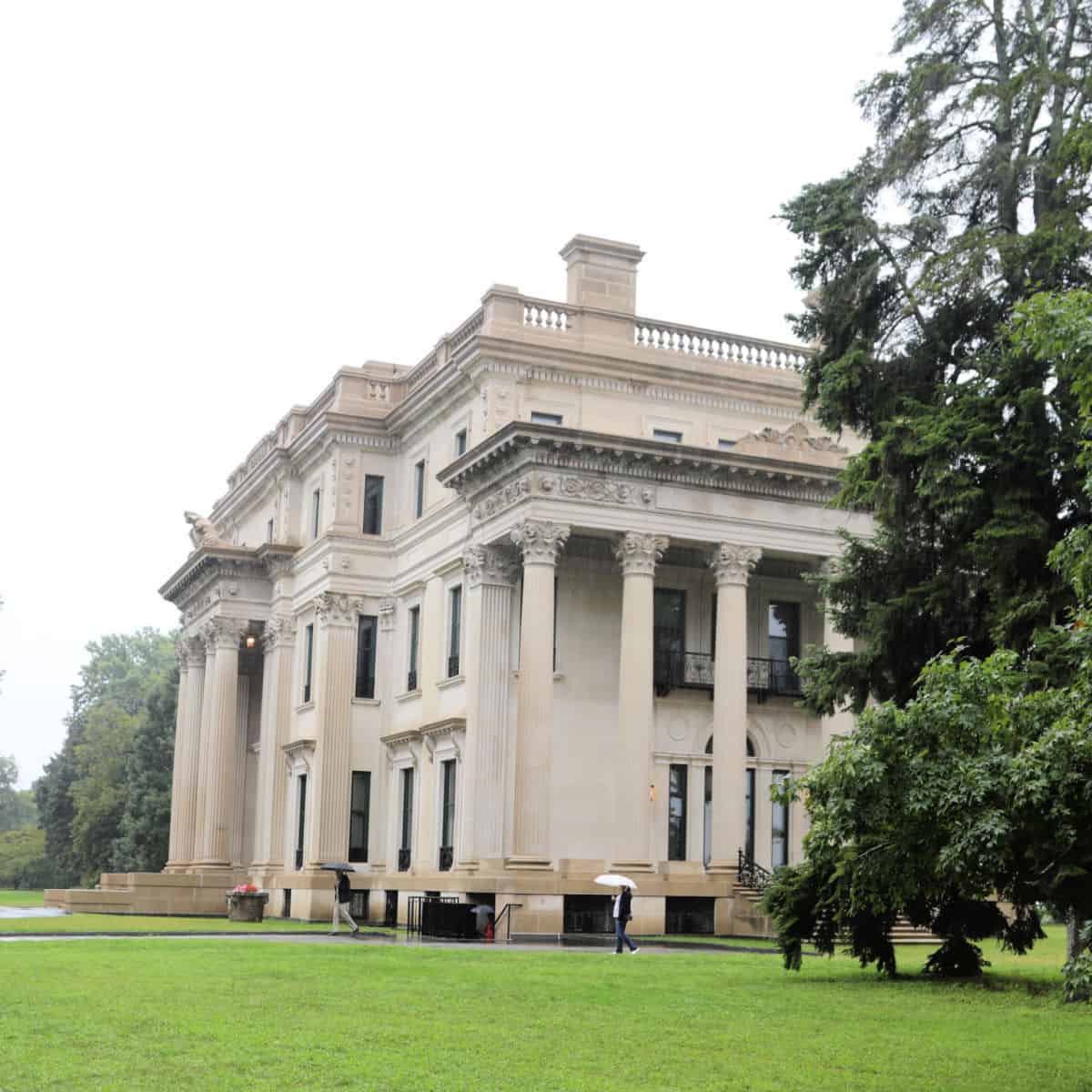
Vanderbilt Mansion National Historic Site
Top Things to do - Start Your Visit at the Pavilion Visitor Center, Tour Vanderbilt Mansion, Visit the Formal Gardens, Explore Bard Rock, Picnicking, Hike the Vanderbilt Riverfront Trail
Lodging -While there are no lodging options within the Vanderbilt Mansion National Historic Site, visitors can find accommodations in Hyde Park, Poughkeepsie, and Rhinebeck.
Camping - If you prefer camping, consider nearby campgrounds such as Clarence Fahnestock State Park
Park Address - 81 Vanderbilt Park Road, Hyde Park, NY 12538
Vanderbilt Mansion NHS is located in Eastern New York approximately 90 miles north of NYC. You can enjoy tours of the mansion, walking the grounds and formal gardens.
Frederik W. Vanderbilt purchased a 54-room mansion in Hyde Park in 1898. The mansion sits on a 600-acre estate with sweeping views of the Hudson River and the Catskill Mountains. The Vanderbilt Mansion showcases the Gilded Age way of life.
The park was created to not only look at the lives of wealthy individuals and families during the Gilded Age but to provide insight into the philosophy of the American country home.
Vanderbilt Mansion was designed in the beaux-arts style by the architectural firm McKim, Mead and White. It was the first house in Hyde Park to have electricity which was generated by an on-site hydroelectric plant.
The inside of Vanderbilt Mansion can be seen on a guided park ranger tour. Tickets can be purchased at the visitor center.
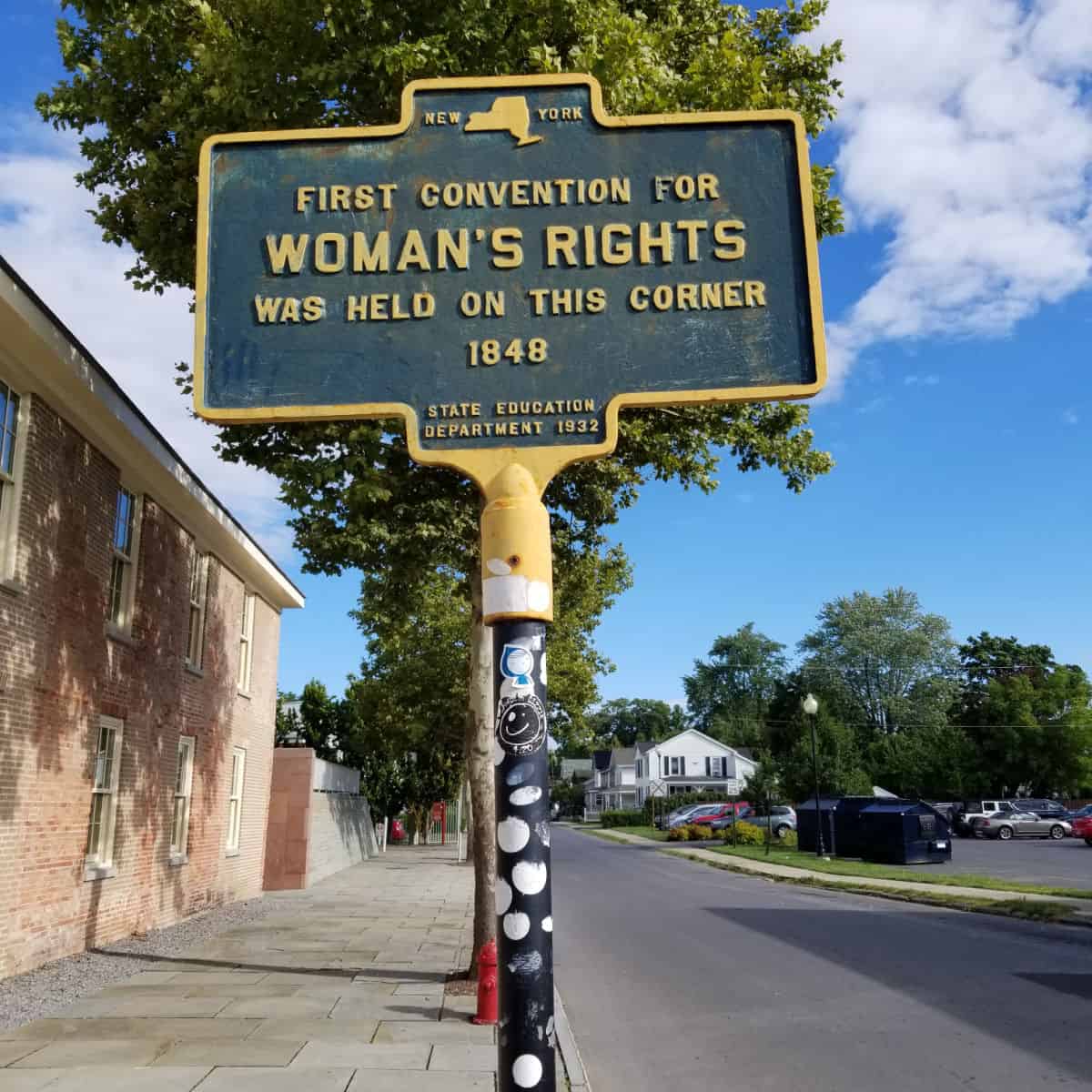
Women’s Rights National Historical Park
Top things to do- Start at the Visitor Center and visit the Wesleyan Chapel, See the Waterwall at Declaration Park, Visit Elizabeth Cady Stanton House and M'Clintock House, Junior Ranger Program
Lodging- While there are no accommodations within the Women's Rights National Historical Park, visitors can find lodging options in Seneca Falls, Geneva, and nearby towns.
Camping- There are no camping options within the park. However, there are several campgrounds and RV parks in the surrounding area.
Park Address- 136 Fall Street, Seneca Falls, NY 13148
Women's Rights NHP is located in Central New York approximately 50 miles west of Syracuse. The park offers a park film, ranger tours, and information on the Women's Rights movement.
A history-changing event took place in the village of Seneca Falls, New York on July 19-20, 1848. 300 people gathered for the first women's rights convention. At the end of the convention, many of the participants signs a Declaration of Sentiment stating "that all men and women are created equal".
This was a major step towards gaining voting rights and property rights for women. This also helped open access to education and workplace equality for women.
Five women gathered on July 9th to start making arrangements for the convention. Elizabeth Cady Stanton, Lucretia Mott, Martha Wright, Mary Ann M'Clintock and Jane Hunt met together. Their meeting was spurred on by the 1840 World Anti-Slavery Convention which was held in London.
The best place to start your visit is at the visitor center in Seneca Falls. The park film does a great job sharing how these women organized the convention. You can also visit the 1843 Wesleyan Chapel where the convention was held.
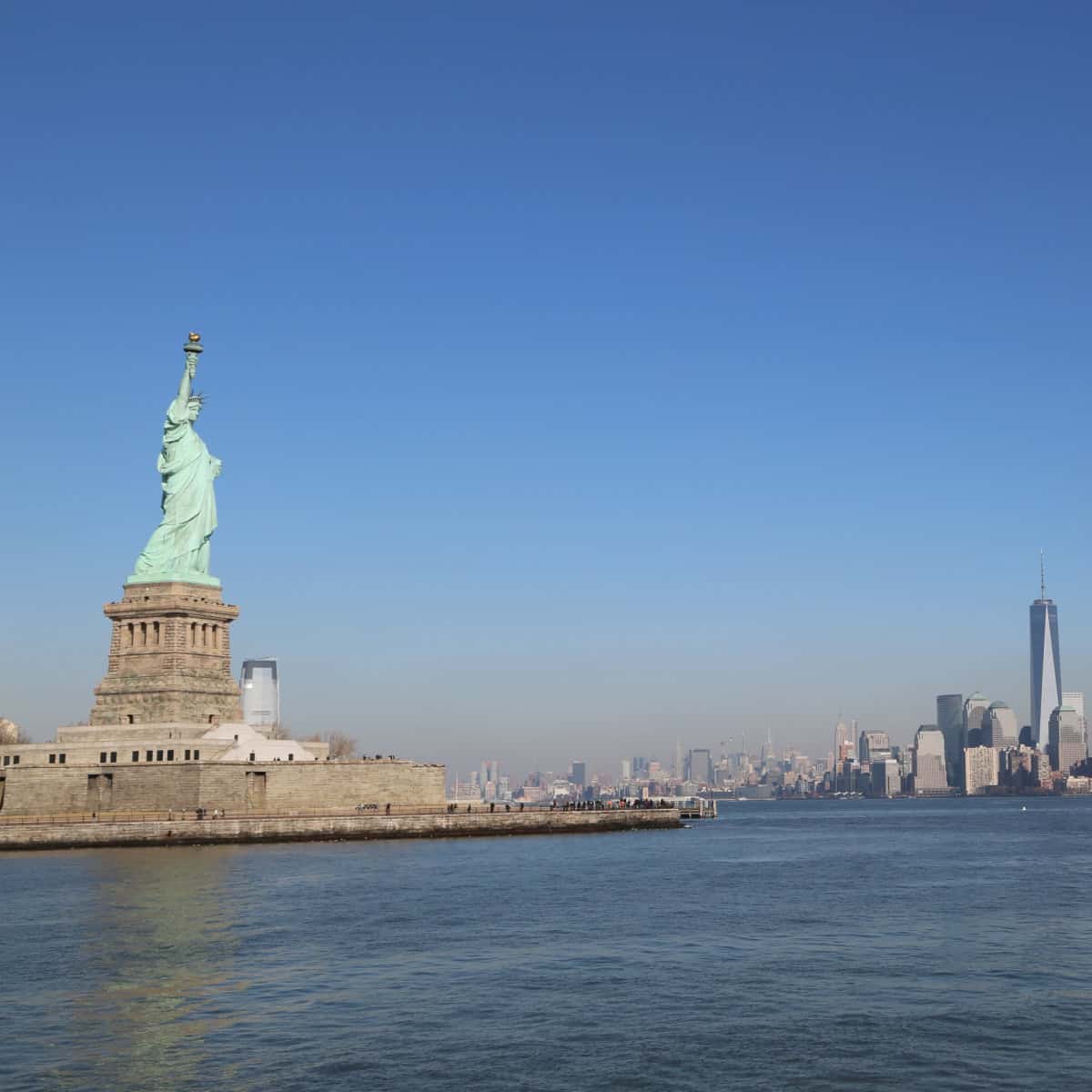
For a fun adventure, check out Escape Campervans. These campervans have built-in beds, kitchen area with refrigerators, and more. You can have them fully set up with kitchen supplies, bedding, and other fun extras. They are painted with epic designs you can't miss!
Escape Campervans has offices in Vancouver, Seattle, Portland, San Francisco, Las Vegas, Los Angeles, Phoenix, Salt Lake City, Denver, Chicago, New York, and Orlando
List of New York National Parks
- African Burial Ground National Monument
- Appalachian National Scenic Trail (Georgia to Maine)
- Castle Clinton National Monument
- Eleanor Roosevelt National Historic Site
- Ellis Island (Part of the Statue of Liberty National Monument)
- Federal Hall National Memorial
- Fire Island National Seashore
- Fort Stanwix National Monument
- Gateway National Recreation Area
- General Grant National Memorial
- Governors Island National Monument
- Hamilton Grange National Memorial
- Harriet Tubman National Historical Park
- Home of Franklin D. Roosevelt National Historic Site
- Martin Van Buren National Historic Site
- National Parks of New York Harbor
- Saint Paul’s Church National Historic Site
- Sagamore Hill National Historic Site
- Saratoga National Historical Park
- Statue of Liberty National Monument
- Stonewall National Monument
- Theodore Roosevelt Birthplace National Historic Site
- Theodore Roosevelt Inaugural National Historic Site
- Thomas Cole National Historic Site
- Upper Delaware Scenic and Recreational River
- Vanderbilt Mansion National Historic Site
- Women’s Rights National Historical Park
Affiliated Sites
- Captain John Smith Chesapeake National Historic Trail (VA, MD, DE, DC, PA, NY)
- Chesapeake Bay Watershed (DC, MD, NY, PA, VA, WV)
- Erie Canalway National Heritage Corridor
- Hudson River Valley National Heritage Area
- Lower East Side Tenement Museum National Historic Site
- Niagara Falls National Heritage Area
- North Country National Scenic Trail (New York to North Dakota MI, MN, ND, NY, OH, PA, WI)
- Washington – Rochambeau National Historic Trail (MA, RI, CT, NY, NJ, PA, DE, MD, VA, DC)
There are 23 New York National Parks with over 17 million visitors each year. These visitors produce over $697 million in economic benefits from tourism. New York parks also include 4 National Heritage Areas, 1 Wild and Scenic river managed by the National Park Service and 3 National Trails.
National Parks in NY also includes 5,895 National Register of Historic Places listings, 268 National Historic Landmarks, 28 National Natural Landmarks and 1 World Heritage Site.
Check out this list of all of the UNESCO World Heritage Sites in the United States.
There are 2,212 places recorded by the Heritage Documentation Program in New York National Parks. with over 4 million objects in the New York National Park Museum Collection.
National Parks in neighboring states
National Parks in Pennsylvania
National Parks in Massachusetts
